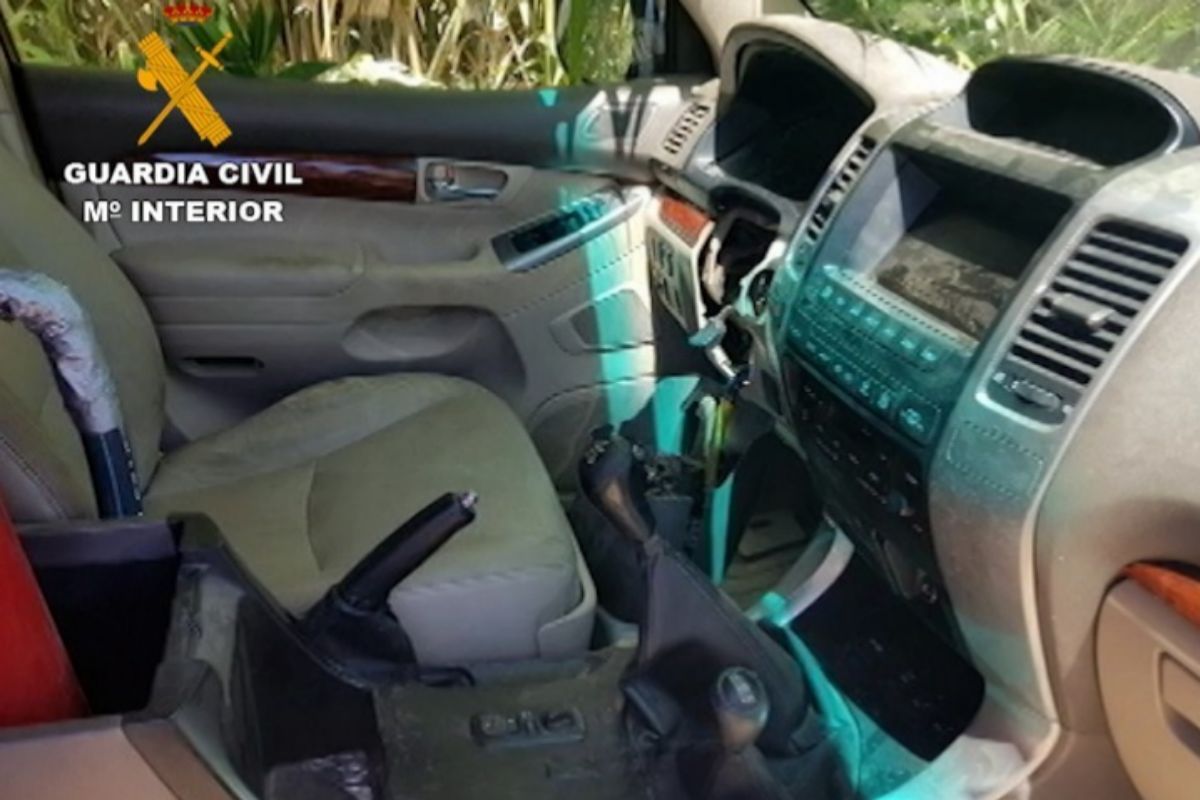Like a flaky version of the classic James Bond, but without Q's expertise to create and install the amazing
gadgets
that always allowed the mythical Aston Martin driven by the spy to escape.
In this way one could describe the members of a group of drug traffickers detained by the Civil Guard in Malaga and Cádiz who, with a fire extinguisher, a tube and a hole in the roof of the cars they used to transport drugs,
had created a sloppy system to flee by throwing foam at the police vehicles
that were pursuing them.
Sources consulted by this newspaper have expressed their doubts about the real effectiveness of the invention of these drug traffickers,
"proof of this is that we have stopped them"
, but they have not hidden their perplexity at the ingenuity of these criminals to achieve their objective.
The device was simple: the fire extinguisher was placed between the driver's and passenger's seats, making it easier for both to operate it if necessary;
In the hole through which the powdery substance was expelled, a hose was attached that went up to the ceiling,
where a hole had been made that allowed its exit to the outside
;
the tube was fixed with handles so that it was not detected and the foam surprised the pursuers when they approached.
Shuttle cars
Despite this sloppy construction, and the question of its effectiveness, the invention could be really dangerous for the integrity of the agents, whose visibility
or adherence to the asphalt of your car could be compromised
if the fire dust hit them.
The network, as specified by the Armed Institute in a statement, was highly specialized and hierarchical, with the head of the group maintaining a lieutenant in each province where they operated.
The components of the same took numerous security measures, restricting the use of private communications
and using shuttle cars for travel
and other cars as a decoy to interpose between the patrols and drug transports.
One of the cars used by the narcos
The investigation that has allowed its dismantling began last March, after detecting an unidentified boat sailing off the coast of the Malaga municipality of Manilva.
A device was established and the agents managed to intervene five bales of hashish
-with an approximate weight of 150 kilos- and an SUV and were able to arrest 21 people.
Seven allegedly implicated
With the information obtained as a result of this operation, then those responsible for the case managed to intervene in Estepona (Malaga)
a total of 1,260 kilograms of hashish distributed in 42 bales
and six vehicles and arrested three individuals.
Later, in the town of Barbate (Cádiz), 55 bundles with 1,650 kilograms of the same drug, three vehicles and numerous electronic devices were seized.
Seven allegedly implicated were also captured.
Once the investigators managed to identify all the members of the organization,
another five components were arrested,
leaving this network that introduced and distributed large amounts of hashish on the coasts of Malaga and Cádiz completely dismantled.
The 'Impassive' operation
has resulted in 36 arrests and the seizure of 3,150 kilograms of hashish
, a boat and 11 vehicles -6 of them stolen-, as well as the location of state-of-the-art telecommunications systems.
According to the criteria of The Trust Project
Know more
Cadiz
Malaga
Civil Guard
CovidCovid mortality soars after Christmas in Andalusia
Pandemic? Christmas hangover ?: Andalusia exceeds the threshold of 2,000 infections and hospital pressure rises
MalagaThe friends investigated for corruption of 'El melillero'
See links of interest
Messi contract
Holidays 2021
Leganés - Lugo
Real Betis - Osasuna
Sabadell - UD Logroñés

